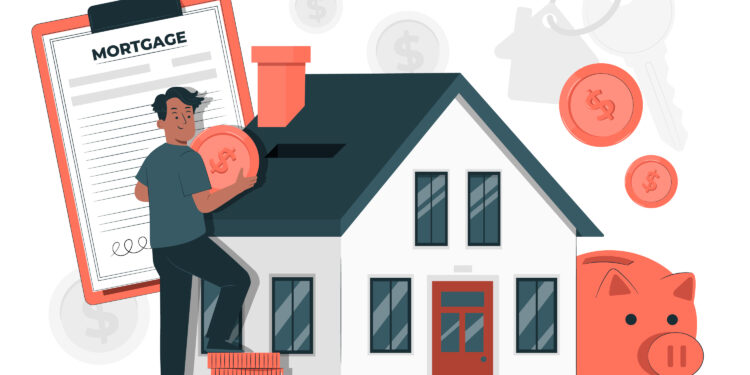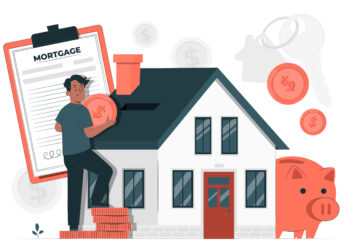The Federal Reserve’s decisions on interest rates shape the money flow through the economy. When the Fed raises or lowers rates, it sends ripples across many markets, especially housing. The announcement made on June 18, 2025, is expected to influence mortgage rates, home prices, and overall market activity. If you are in real estate, it is important to understand what this change means. This includes homebuyers, homeowners, and investors.
Let’s explore what the Fed decided, why it matters, and how it could reshape the housing landscape.
The Federal Reserve’s Rate Decision on June 18, 2025: What Was Announced?
Background Leading Up to the Fed Rate Decision
Before this latest announcement, the economy showed mixed signals. Inflation had been slightly above the Fed’s target, but employment numbers remained strong. GDP growth was steady but slowing compared to previous years. These factors put pressure on the Fed to decide whether to boost or cut interest rates.
In the past months, the Fed did not make big changes. They kept the rate steady to watch how the economy develops. But with recent economic data, the Fed faced the tough decision of whether to tighten or loosen monetary policy.
Details of the June 18, 2025 Rate Announcement
With markets expecting no chance of a central bank move this week, the Federal Open Market Committee kept its key borrowing rate targeted in a range between 4.25%-4.5%, where it has been since December. This surprise move aimed to give the economy time to adjust to recent borrowing cost increases. It also sought to avoid unnecessary shocks. The Fed cited stable inflation and cautious optimism about economic growth as reasons for holding rates steady.
The Fed has chosen to be cautious at this time. They are watching inflation closely but still focus on economic stability. The market showed a mix of relief and cautious hope. Mortgage rates stayed steady at first, but changes are expected soon.
How the Fed Rate Hike or Cut Affects Mortgage Rates
Immediate Impact on Lending Rates
The Fed’s rate directly influences short-term interest rates, but mortgage rates often follow with a lag. When the Fed raises rates, mortgage interest rates tend to go up too, making borrowing more expensive. Conversely, when the Fed cuts rates, mortgage costs usually decline, easing borrowing pressures.
Following this announcement, mortgage lenders did not change their rates immediately. However, investors anticipated future rate hikes or cuts, leading to some short-term fluctuations. Buyers might see small changes in their mortgage offers within days.
Long-Term Trends in Mortgage Borrowing
Looking at history, rate hikes by the Fed often lead to higher mortgage rates over the next few months. For example, during past rate increases, 30-year fixed mortgage rates climbed about 0.5% within six months. Adjustable-rate mortgages (ARMs) tend to react faster to rate changes, increasing monthly payments more quickly.
FHA loans and other government-backed mortgages may also experience rate shifts, but these tend to be less volatile. Overall, the direction of Fed policies helps shape the borrowing landscape for years to come.
Influence of the Fed Rate on Housing Market Dynamics
Home Prices and Homebuyer Affordability
Higher mortgage rates mean higher monthly payments. As borrowing gets more expensive, fewer people can afford large homes, causing some slowdown in house prices. Conversely, lower rates make homes more affordable, boosting buyer interest.
In recent years, rising mortgage rates have already put a damper on home prices, especially in overheated markets. Analysts expect this trend to continue if rates remain high, potentially leading to a slowdown or even slight declines in some areas.
Home Sales Volumes and Market Activity
Fewer buyers tend to enter the market when mortgage rates climb. Past rate hikes, like those in 2023, led to drops in home sales by 10-15%. Some markets cooled off as buyers hesitated, waiting for rates to fall again.
On the flip side, if rates stay steady or fall, we might see a resurgence in sales. Buyers who had been holding back could jump back into the market, increasing activity and competition.
Construction and Housing Supply
Higher interest rates increase borrowing costs for builders too. This can slow down new construction projects as developers find it harder to finance developments. Less new housing means existing homes become more in demand, but overall supply may shrink.
Countries with rising rates often build fewer homes. This can lead to higher prices if demand stays strong. But if rates stay elevated too long, construction could grind to a halt, tightening supply further.
Expert Analysis and Market Projections
Industry and Economist Predictions for the 2025 Housing Market
Most experts believe that the Fed’s decision to keep rates steady signals caution. Some economists predict that mortgage rates will hover around 6% through 2025, making homes less affordable for many.
Leading real estate analysts warn that if rates eventually rise, expect a slowdown in home sales. Conversely, if rates fall later this year, prices could stabilize or grow slowly. The key takeaway? Market activity remains sensitive to rate changes.
Potential Risks and Opportunities
Rising rates pose risks to buyers, making homeownership pricier. Investors might notice slower rent growth. However, good chances could arise for those who are ready to secure lower mortgage rates if the market weakens.
Sellers should watch for reduced buyer urgency but also consider that declining prices could create chances for strategic negotiations. First-time buyers, in particular, need to stay alert about home loan options as rates shift.
Actionable Insights for Stakeholders
For Homebuyers
Lock in your mortgage when rates are low, or consider adjustable-rate options if you think rates might fall later. Timing your purchase based on rate trend signals can save thousands over the term of your loan.
For Homeowners and Investors
Refinancing may be an option if rates dip unexpectedly. Keep an eye on interest rate forecasts—if they fall, refinancing could lower your monthly payments or cash out to invest elsewhere.
For Real Estate Professionals
Guide clients through changing market conditions. Use current rate trends to tailor advice—whether they’re buying, selling, or refinancing. Adjust marketing strategies to highlight affordability or investment potential in current climate.
Conclusion
The June 18, 2025, Fed rate announcement marks a cautious pause in the central bank’s monetary policy. While mortgage rates stayed steady for now, the future remains uncertain. Higher rates might slow home prices and sales. However, they can also create chances for smart buyers and investors.
Remaining aware of market signals and interest rate trends is key. Whether you’re planning to buy, sell, or hold, adapting your approach now can set you up for success in the evolving housing market. Keep your eye on the Fed’s moves—they directly influence your next move.














